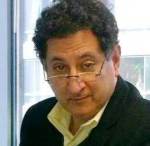Updated
Morocco Focuses on the Fundamentals: Economic Growth, Education, Water Resources – Jean R. AbiNader
Jean R. AbiNader
January 15, 2020

Jean R. AbiNader, Moroccan American Center
The government’s 2020 agenda is a bit obscure as political lenses are focused on the 2021 elections, and the members of the governing coalition see little reason to yield any ground that may be exploited by their counterparts for public benefit, as they will soon be election rivals.
This is particularly acute for the PJD, the moderate Islamist party, which finds itself a bit unbalanced by sniping from its partners, as well as an internal attempt by the previous Prime Minister, Abdelilah Benkirane, to reclaim his position. It is unclear how the these machinations will impact the Chamber of Deputies/Parliament and respond to the high expectations set by King Mohammed VI calling for progress on a number of fronts with the same goal – improving access to opportunities and jobs for the Moroccan people through a new development model, as well as more efficient governance. Of course, there are some commentators who would welcome the PJD’s fall from the leadership in Parliament so that there will be a change in the leading party.
As a cogent analysis from Menas.co pointed out, “The domestic political scene will be heavily dominated by the upcoming 2021 elections, with various personalities seeking to propel themselves to the fore.” It notes that Aziz Akhannouch, the leader of the Rassemblement National des Indépendants (RNI), is charismatic and gaining in popularity, unlike Prime Minister Saadeddine El Othmani, who continues to stumble.
The political class must be cognizant of the need for action as Morocco is not without issues that must be acted on in 2020, including continuing protests related to the economy, corruption, lack of social services, and inadequate salaries. The king expects that current social legislation, held up since last year, will be enacted and mentions, from time to time, the need for an independent judiciary and respect for human and civil rights, in addition to appointing a royal commission to define a robust national development model.
“Despite the very real and biting social problems, the Monarchy will retain its popularity and will continue to provide a sense of stability in the face of mounting political and social pressures,” according to the Menas report, while sustaining efficient counter terrorism security activities throughout the country.
Another area of concern is maintaining an economic growth rate so as not to erode salaries, the availability of consumer products, and a relatively stable currency that sustains purchasing power. Although the economy has shown resilience, growth is expected to slow in 2020. The IMF has predicted that the fiscal deficit, projected to remain at 3.7% of GDP in 2019, will stabilize to around 3% of GDP after 2020. As the Menas report concludes, “There is concern that rising external debt levels will create serious future problems for the country, and especially because the government is using much of the money it is borrowing for operational costs rather than for investment.”
On the regionalization front, the government is moving ahead with plans to set up schools of higher education in underserved regions in Morocco to prepare youth to take more responsibility for economic development. Morocco World News reports that Minister of National Education, Vocational Training, Higher Education, and Scientific Research, Said Amzazi, announced that 34 new higher education institutions will be set up in 2020, twice the number launched last year. “The new facilities would assist the implementation of advanced regionalization by ensuring the strengthening of university infrastructures in various regions of Morocco. The institutions would also facilitate access to higher education, especially in rural provinces,” according to the article.
Laayoune will receive a medical school while other areas will have schools in technology, education, business, engineering, economics, science, medicine, and several multidisciplinary schools. The minister said that “There are currently 12 public universities in Morocco in eight different regions. The universities coordinate a total of 145 higher education establishments, including 61 open-access institutions and 84 others with limited access.”
To augment an increasingly scarce resource, Morocco will spend $12 billion on sustainable water supply projects between 2020 and 2027 to meet increasing demand in several parts of the country. Morocco was ranked as the 22nd-most water stressed country in a report last August by the World Resources Institute, a watchdog of global resources. Despite the importance of agriculture to the country’s economy, there are still gaps in its national water strategy. Farm income is volatile in semi-arid regions where climate change has caused droughts and summer flash floods in some areas.
The program includes dam building, improving water consumption, preserving water resources, and increasing supply in rural areas. As urban centers and industrial estates have expanded in the north and central regions, water demand has surged and is a threat to balanced economic growth. Light rainfall has great consequences for the country, as in 2018 when cereal production fell 49% compared to the previous year, which reduced the agricultural sector’s contribution to GDP by more than 5%, affecting the more than 40% of the population engaged in agriculture.